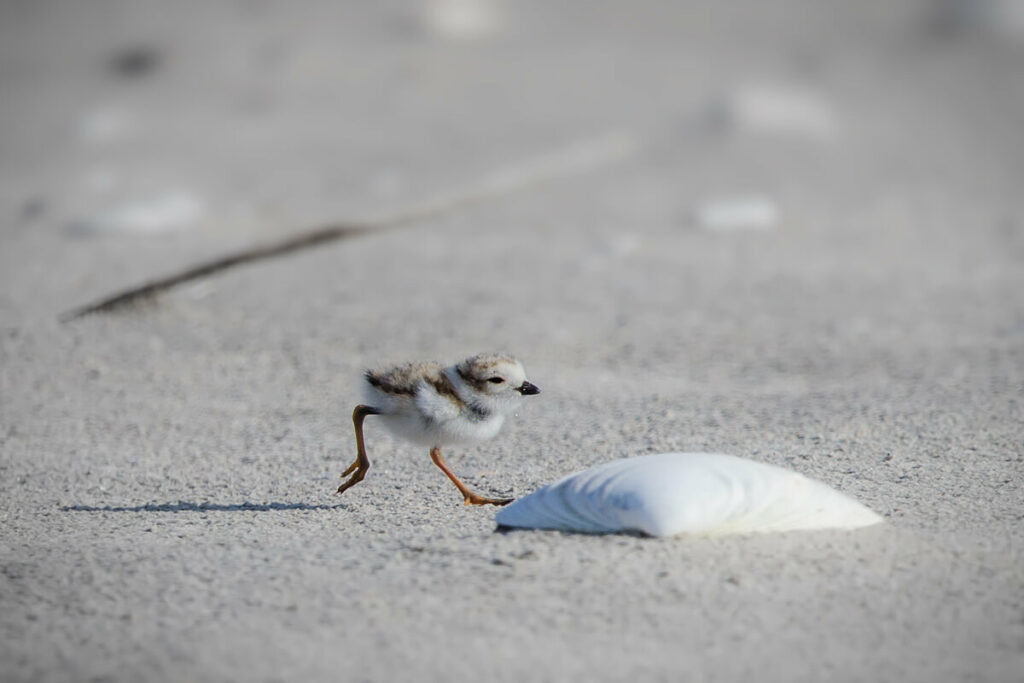


Protection for New Jersey’s Wildlife
Almost 50 years ago, the NJ Endangered Species Conservation Act of 1973 (NJSA 23:2A-1 to 23:2A-1:16) was passed. This landmark legislation established laws to protect and restore endangered and threatened wildlife in the Garden State. As a result of the legislation, the NJ Fish and Wildlife established the Endangered and Nongame Species Program to carry out the work necessary to restore and maintain these species.
The Act was signed into law on December 14, 1973, two weeks before President Nixon signed the federal Endangered Species Act. The New Jersey law is designed to protect species whose survival in our state is imperiled by loss of habitat, over-exploitation, pollution, and other impacts. In 2022, the list includes 50 species as endangered and 34 species as threatened.
Now, almost 50 years later, we can celebrate many success stories resulting from the work of dedicated staff and volunteers. They include:
- The restoration of the state’s bald eagle population from a single nest to more than 225 nests statewide.
- The recovery of peregrine falcons , a species extirpated in the 1960s, now numbering 35 pairs in NJ.
- The recovery of the osprey population, restored to its historic level of 700 nesting pairs.
- The stabilization of beach-nesting birds that remain part of our coastal biodiversity along 127 miles of coastline.
- Protection for reptile and amphibian species and the habitats they depend on.
- Protection for bats and their seasonal roosts, which remain critical in the long recovery from white-nose syndrome.
- The recognition of the value of pollinator insects to functioning ecosystems.
- Cutting-edge work to Connect Habitat Across New Jersey – CHANJ – by uniting conservation and road design.
- Representing critical wildlife habitat by modeling endangered species data with land use data.
Why Protect Endangered Species?
Although species become extinct naturally, there is concern when human activities increase the rate of extinction, such as what is occurring right now with the 6th mass extinction. Since humans share the environment with animals and plants, our survival depends on maintaining a balanced ecosystem. When this balance is undermined, the effects on plants and animals may ultimately impact the support systems humans need. For example, it was the decline of eagles, ospreys and peregrine falcons in the early 1970s that alerted us to the dangers of certain pollutants and insecticides to humans.
The natural environment is comprised of many complex relationships between plants and animals. Some are well understood, while others are not. Think of all the complex parts you can see when you open a computer. You may recognize some parts, but many will be unfamiliar to you. Now imagine removing some of the unfamiliar parts. Depending on the part, you may immediately render the computer inoperable, or the impact may not be noticeable at first. Eventually, an impact will be realized, as the computer may not function or perform at optimum levels. The same result can occur in the Earth’s natural systems. Although it may not be understood, all species play an ecological role(s) and thus have an ecological value. Whether they are a producer, predator, decomposer, or scavenger, each species has a role linked to another all the way to the top of the food chain.
Many species may benefit humans in ways not yet discovered. Consider this: only 2 percent of more than 250,000 plant species have been evaluated for possible medicinal value. Once lost, the genetic information in these species is gone forever. No matter how insignificant a species may appear, it could some day benefit us.
The decline or disappearance of one species may signal the deterioration of a habitat. Other species, and human health and welfare, may soon follow. By preserving the future of endangered and threatened species, we help preserve our own.
 Official Site of The State of New Jersey
Official Site of The State of New Jersey
